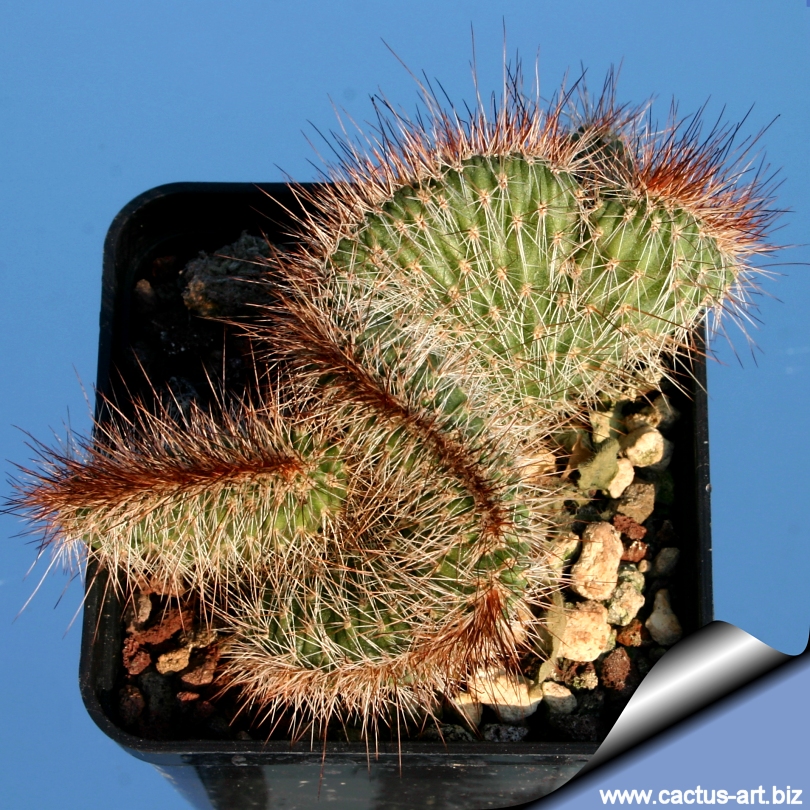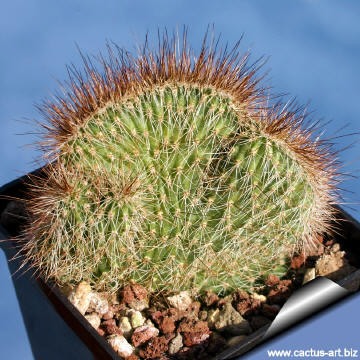|
|
|

Nyctocereus serpentinus is a popular slender columnar cactus that with
height will fall over and snake around. The crested form stay smaller
and forms pronounced sculpture effects.
|
 |


|
|
Advertising
|
|
|
|
|
Family:
Cactaceae (Cactus
Family)
Scientific name: Nyctocereus
serpentinus Lagasca & J.D.Rodríguez
In: Contr. U.S. Natl. Herb. 12:423. 1909
Origin: Tropical areas of southern Mexico (México, Michoacán,
Morelos, Oaxaca), but now largely spread around Mexico. The crested form
is of garden origin
(Nursery produced cultivar)
Conservation status: Listed in
CITES appendix 2.
Common English Names include: Snake cactus,
Night-blooming cereus, Queen of the night (In Mexico it is know as Junco
Espinoso, Reina de la Noche)
Synonyms:
- Peniocereus serpentinus (Lagasca
& J.D.Rodríguez) N.P.Taylor 1987
- Cereus splendens
- Nyctocereus castellanosii
- Cereus ambiguus
- Cactus ambiguus
- Echinocereus serpentinus
- Cactus serpentinus
- Cereus serpentinus
|
|
Description: The
typical Nyctocereus serpentinus is a fast-growing
slender, shrubby columnar cacti from that grows often in groups, erect
at first sometimes climbing then leaning and sprawling all over and best
tied to something so it wont fall and grow decumbent. It would be good
for hanging baskets.
Crested form: The crested form are cultivated for their beautiful
stem with long bristly dark brown-red spine and pronounced sculpture
effects. These plants produce monstrous crests, and crests occasionally
produce normal shoots.
Stem: Slender, snake-like, dark coloured, cylindrical, 3-6 meters
long, 2,5-5 cm in diameter.
Root: Large tuberose
Ribs: 10-17 obtuse.
Areoles: Whitish white wool
Spines: 9 to 14 needle-like spines, whitish to reddish when
young, with darker tips, 10-30mm long.
Flowers: When old enough it bears large, nocturnal flowers, they
are funnelform, white with pinkish outside segments, 15 to 20cm long (15
cm in diameter), pericarpel and flowers with bristles. The flowers are
very fragrant, like gardenias.
Fruit: 4-6 cm long, red, egg-shaped, edible, spiny, with spines
that fall when it is ripe.
Seeds: Black 5 mm. Long.
|
|
|
|
Cultivation: Produces best results in loose and very drained
soil, rich in leaf-mould, and if sufficient water is supplied in warm
weather a rather considerable growth can be made. It needs bright shade
to partial sun. The plants will stand but little cold and require a
minimum winter temperature of about 10° C. (but can resist for short
period to 0° C). Growth is rapid, and supports are needed for the stems.
The half‑erect habit of the moderately tall plants makes them desirable
for middle foreground position in landscaping, while the comparatively
small room needed for potted plants makes it an acceptable group for
greenhouse culture.
Propagation: By grafting or
(sometime) by cuttings.
USES:
- In Mexico it is one of the most widely cultivated species for
the beauty of its white flowers that open at night
- Grown in Mexico (Sonora), California and Chile for its
fruit.
- Sometime used as a strong and fast growing grafting
stock.
|
|